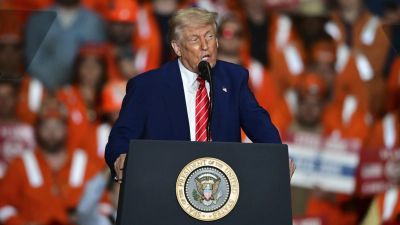Trifurcate J&K, there’s no other option
Three cheers to Dr Pankaj Anand for his October 31 letter advocating J&K's trifurcation. However, all concerned must note that this se...

Three cheers to Dr Pankaj Anand for his October 31 letter advocating J&K’s trifurcation. However, all concerned must note that this separatist demand is not based on the Hindu-Muslim divide. Instead, its rationale is the economic deprivation and political despotism exercised by the "Kashmiriyat" clan.
The demand goes 48 years back to Jawaharlal Nehru’s ministerial colleague, Dr Syama Prasad Mookerjee.
In a speech at Kanpur on December 29, 1952, Dr Mookerjee had referred to "an impression gaining ground that with our blood and money we are carving out a virtually autonomous State for Sheikh Abdullah." He therefore proclaimed that the partition of J&K had become a matter of Hobson’s Choice: Kashmir Valley could be made a separate state but Jammu and Ladakh must not be sacrificed.
The charges against the Kashmiri clique are many. Writing in the May 2000 issue of Voice of Kashmir magazine, J.N. Bhat, retired judge of the J&K State High Court, alleged that thousands of plots carved out in the suburbs of Jammu have been allotted to Kashmiris. In some localities of Jammu city, water is supplied after a gap of three to four days, and not even enough of it to quench thirst. More accusations come from Hari Om, professor of History in Jammu University. In a recent newspaper article, he complained that although Kashmiris constitute roughly 22 per cent of the State’s total population, Abdullah’s National Conference Party captured nearly half of the total Assembly and Lok Sabha seats. The trick lies in 46 Assembly segments created in 1951 in the Valley as against 41 segments combined in the far bigger and more populated Jammu and Ladakh regions. This mechanism is apparently contrary to relevant rules.
In any case, Kashmiris hold over 2,30,000 out of nearly 2,40,000 positions in government and semi-government organisations in the Valley. They have also cornered nearly 25 per cent of the jobs in the regional services of Jammu and Ladakh.
Besides this, all the professional and technical institutions, universities and all the big public sector industrial units located in the Valley are the sole preserve of the Kashmiris. They wangle more than 50 per cent of the seats in Jammu’s medical and engineering college, and the Agricultural University in R.S.Pura. No such institution exists in Ladakh.
Then there is the issue of trade. The Kashmiris control trade, commerce, transport and industry, and own big orchards as well as landed estates in the region. None of them is without a house. Likewise, the per capita expenditure on woollen clothes in Kashmir is perhaps the highest in the world.
Finally, a vast majority of the Kashmiris don’t pay a penny to the State’s revenue. Jammu and Ladakh contribute over 90 per cent to the state’s coffers, but a major part of this money is not spent in these regions.
Thus, concludes the professor, "it is the Kashmiris everywhere and all others in the state exist nowhere."
No wonder even our newspaper editors refer to J&K merely as "Kashmir", forgetting that "J&K" is not Kashmir and that "Kashmir" is not J&K.






- 01
- 02
- 03
- 04
- 05

























